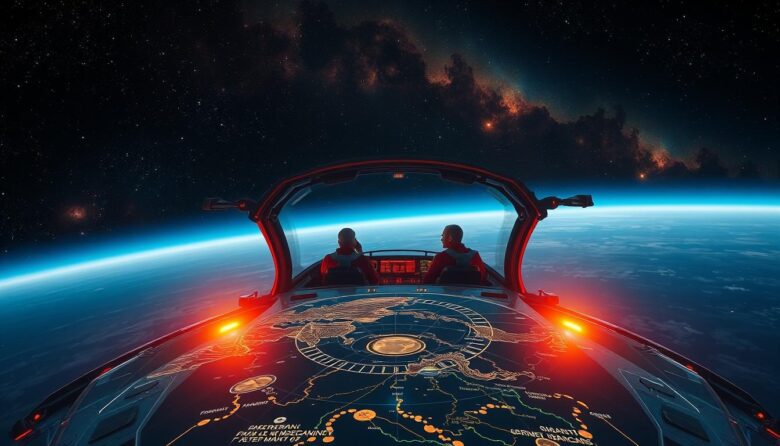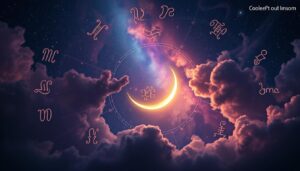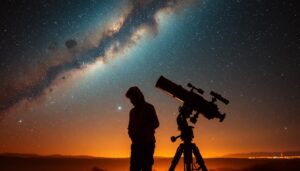Les Johnson started as a NASA astronaut in 2004 and now writes about space travel. His book, A Traveler’s Guide to the Stars, shows humanity’s move from Earth to the stars. After flying on the Discovery shuttle at 17,500 mph in 2009, he now writes about traveling to other planets.
His first mission covered 5.7 million miles in 14 days. Now, his words guide us to distant planets.
Key Takeaways
- Les Johnson’s NASA career included a 2009 shuttle mission delivering supplies to the International Space Station.
- His book A Traveler’s Guide to the Stars won the Canopus Award, blending science and storytelling.
- Initiatives like Breakthrough Starshot aim to make interstellar travel a reality.
- Over 5,700 miles were traveled during Johnson’s 2009 mission, showcasing space exploration’s progress.
- The guide discusses thousands of exoplanets and ethical questions shaping humanity’s cosmic future.
The Journey Begins: A Sci-Fi Adventure in Outer Space
Every sci-fi adventure starts with a question: What lies beyond the stars? This section explores how stories blend imagination with science to spark curiosity. NASA’s CubeSats and solar sails, tools used today, mirror the warp drives and stardates of Star Trek’s universe.
“The cosmos is a story waiting to be told—one where science and fiction dance hand in hand.” — NASA’s Jet Propulsion Laboratory, 2023
Setting the Scene: The Boundless Cosmos
Sci-fi adventures thrive on cosmic wonder. Georges Méliès’ 1902 film Le Voyage dans la lune pioneered this, blending whimsy with early space dreams. Modern tales like 2001: A Space Odyssey elevated realism, showing zero-gravity physics and alien encounters grounded in plausible tech.
| Sci-Fi Tech | Real-World Inspiration |
|---|---|
| Star Trek’s Warp Drive | NASA’s solar sails |
| Alien artifacts like the Soft Blade | CubeSats exploring asteroid fields |
| Intergalactic diplomacy | Current Mars rover missions |
Introducing Our Intrepid Explorer
Kira’s quest mirrors real explorers like those in NASA’s Artemis program. While her role as sole savior draws criticism, it reflects historical narratives—from Columbus to Neil Armstrong—where individual courage drives progress. The Wallfish crew’s depth shows how teamwork balances solo heroism.
- Sci-fi adventure classics use relatable heroes to make cosmic stakes feel human.
- Interstellar journey tales often highlight tech like Ikarie XB-1’s psychological realism.
Embracing the Mystical Cosmos: a story: travel to stars
Stories like Stellaris: Journey to the Stars mix science and fantasy. The Nova Explorer’s crew, led by Captain Elara Venus, explores the cosmos. They use the Quantum Core, inspired by real tech, to travel through space.
“The stars aren’t distant dreams—they’re destinations waiting to be reached,” says Captain Elara in the book.
On Verenthis, they find glowing plants and ancient ruins. These fictional travel tales remind us of shows like Star Trek. The crew’s journey shows the power of teamwork and innovation.
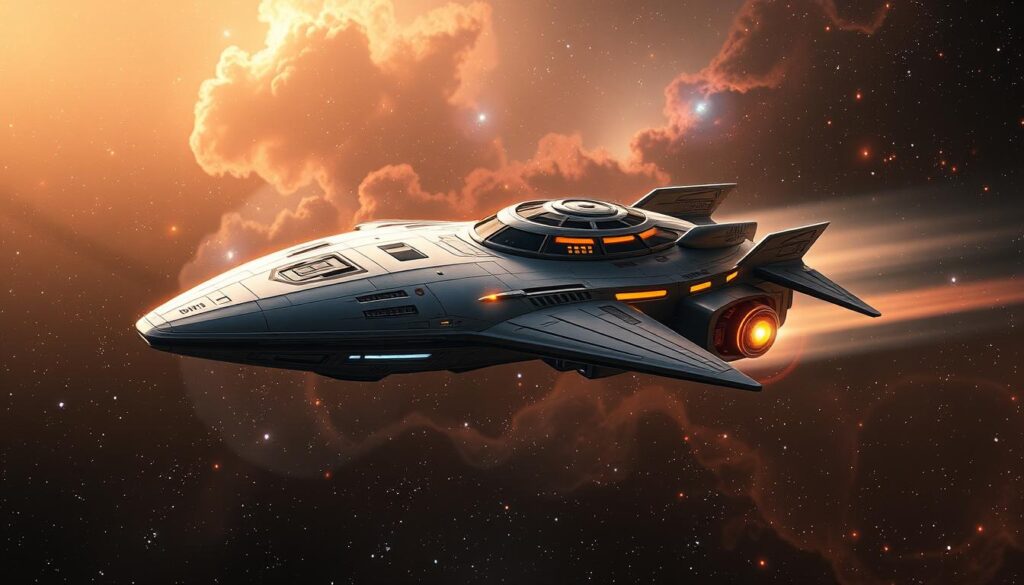
| Real Science | Fictional Elements |
|---|---|
| Solar sails using photon pressure | Quantum Core space-bending |
| Gravitational physics | Verenthis’ ancient tech |
Books like Stellaris (ISBN: 979-8854201308) spark dreams of space travel. The Star Nomads, like the crew, explore and share cosmic secrets. Through stories and science, we wonder: What’s beyond the next star?
Innovations and Inspirations in Space Exploration
New tech like fusion engines and solar sails is changing how we explore space. These advancements help with real missions and spark our imagination.
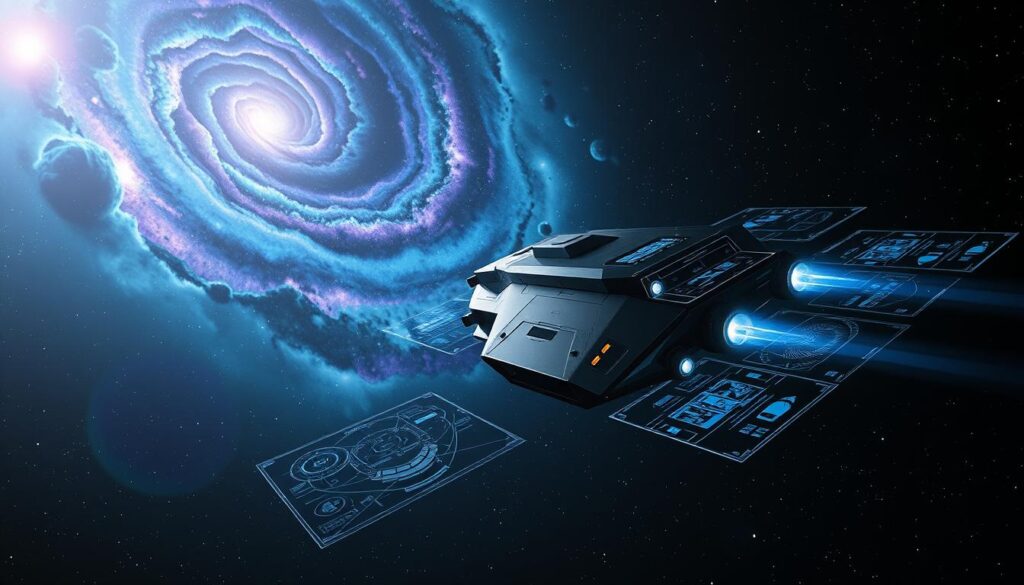
Futuristic Technologies and Their Impact
- Fusion propulsion systems could make trips to Mars much faster. Antimatter drives might even let us travel to other stars.
- NASA’s Europa Clipper mission uses advanced robots to study Jupiter’s moon. It’s a mix of science and cosmic exploration stories.
- Reusable rockets like SpaceX’s Falcon 9 have made launching spacecraft cheaper. This means we can explore space more often.
The Role of Cosmic Exploration in Fictional Travel
“The best sci-fi predicts the future by daring to ask, ‘What if?’”
Stories like Interstellar and The Martian use real tech to inspire engineers. They dream up solutions for things like lunar habitats. The 24 nations signing the Artemis Accords show how working together can achieve big goals in space.
Advances like the X-59’s quiet flight and laser communications in space show how fiction inspires us. The Ingenuity Mars Helicopter’s 54 flights also show how sci-fi ideas become real.
Conclusion
The universe is 13.8 billion years old, and our time fits into a cosmic calendar. Humanity started on December 31’s evening. Written language came at 11:59 PM, and modern astronomy began in the last seconds.
This timeline shows our brief but powerful impact. We are now reaching for the stars.
Futuristic stories drive our dreams of space. Sci-fi like Cosmos by Carl Sagan and Origins by Neil DeGrasse Tyson mix imagination with science. They inspire real discoveries.
NASA’s missions and Hubble’s images show the link between fiction and reality. Every spaceship launch or exoplanet find proves stories can become real.
Looking up at the stars, we remember our journey started with myths and ended with rockets. Today’s stories, in books, films, or labs, shape tomorrow. Check out NASA’s Planetary Photojournal or the Hubble site to see science and storytelling together.
The next chapter of space travel is waiting. It’s written by those who dream big.
FAQ
What is interstellar travel?
Interstellar travel means going between stars. It involves technologies for trips beyond our solar system. This topic mixes science fiction with real science.
How do real-world technologies relate to science fiction in space exploration?
Technologies like solar sails and CubeSats come from science fiction. They also help us move forward in space. These tools mix real science with creative stories to deepen our space knowledge.
What are some examples of current space technologies in use?
Today, we use solar sails for propulsion and CubeSats for various missions. These examples show how engineering boosts space travel.
How does space exploration inspire storytelling?
Space exploration offers endless stories. Sci-fi tales often talk about adventure, discovery, and the unknown. They inspire both fun and real science.
What role do advanced propulsion technologies play in future space exploration?
New propulsion techs like photon propulsion promise interstellar trips. They spark dreams of reaching distant stars, inspiring both scientists and writers.
Why is the relationship between science and sci-fi important?
Science and science fiction are key to innovation and curiosity. Sci-fi entertains and pushes real science forward. It shows how dreams can lead to big space achievements.
